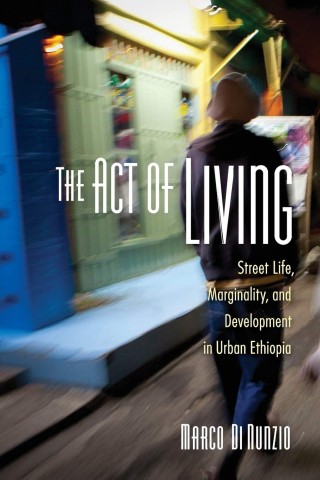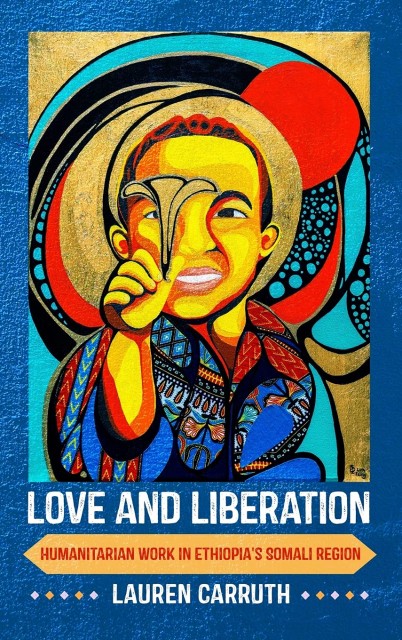With Islam, Ethnicity, and Conflict in Ethiopia, Terje Østebø contributes a historical ethnography to two under researched domains. First, to African and Ethiopian studies and secondly to Islamic studies. As a field of study, African studies, and Ethiopian studies in particular, have tended to focus on dominant themes, such as the largest populations, key livelihoods, or centers of political power, leaving many issues in the periphery (including the role of religion beyond religious studies). This is not only a matter of coverage in content, but also a matter of the vantage point from which those perspectives are told (e.g., from whose perspective are histories constructed). Similarly, the knowledge produced in Islamic studies that focus on the experiences and contributions south of the Sahara is comparatively less relative to political-economic centers. Scanning the Journal of Islamic Studies, as an example, there are more than 600 publications on Egypt, around 50 on Ethiopia and less than 20 on Tanzania. What makes this book notable is it being one of the exceptions. Further, while the subtitle, The Bale Insurgency, 1963-1970, suggests the book might be specific to Bale and to the 1960s, it offers much more in breadth and depth. One of the strengths of the book is its attention to the perspectives and experiences of key local actors who were involved in the insurgency. The author's ethnographic fieldwork provides a nuanced account of their strategies, tactics and motivations.
The chapters that cover the history, organizational structure, international linkages and leading individuals involved in the Bale movement are fascinating. As an example of the richness of the historical work, the leaders presented in Chapter 5 (and elsewhere) bring to life people who were international figures, having studied in Harar and Yemen, were travelling to Saudi Arabia, Somalia and Djibouti, and had ties to Egypt and Iraq. These geographies further emphasize the importance of the re-orientation that this book attempts, in centering religion within a context wherein it has often been periphery. While enjoyable to read, there are points that readers might have expected to be questioned or critiqued. For example, the author describes these leaders as having "little to no education" (Page 129), drawing on what appears to be Euro-Western assumptions and conceptions of what is considered valued and valuable forms of learning (discounting the immense expertise and learning that these leaders embodied).
The richness of this historical ethnography presents theological aspects as well as theoretical insights. For example, the author explores the nature of the emergence and syncretisms of Islam within Bale, which are often descriptive, and while lacking analyses are interesting and informative (as the author says: the process of the "Islamization of the Oromo and the Oromization of Islam"; Page 52). This continues with describing how Islamic practices were integrated into identity, resulting in a distinct form of Islam. Chapters 6 and 7 not only provide a contestation of how the conflict is classified but also provides a wealth of data, history and insight that will be useful for scholars and students for exploring other research questions.
One of the primary academic investigations that the author engages in is with forms of identity. Terje uses the concept of peoplehood or imagined peoplehood (Page 5) to conceptualize descriptors of ethnic and religious identities (which he defines as the foundational dimensions of peoplehood). While this concept does offer flexibility, it remains somewhat unclear why certain aspects of identity are emphasized at certain times, by certain people, and why this changes. In other words, how association with identities varies based upon time and circumstance (or, as Terje puts is: how an individual self defines in relation to a continuum of realities; Page 8). The application of this concept as an analytical tool is not as interwoven into the chapters as readers interested in the concept might like (references to it are largely in the opening and closing chapters. Between Chapters 3 and 8 / Pages 66 to 208 the concept is rarely mentioned, which seems a missed opportunity to integrate perspectives using the historical and ethnographic content). Nonetheless, peoplehood is a useful approach to enable a rethinking of identities, and specifically a centering of religion within the continuum of realities. This book does well in contesting binary forms of assessing identity, and the rebalancing that Terje offers is warranted and valuable.
Chapter 2, with details on the geography, infrastructure, and demographics of Bale, could have been strengthened with additional specific data and clarity of sources. In Chapter 3, similarly, the sources given for parts of the historical narrative are not always clear for follow-up research. While readable and enlivened with personal experiences, from a university press book, one would typically expect altitudes and areas to be provided with more references, and for the references used, more recent data than what was obtained in 2004 from a zonal administration report. This is not just a matter of academic style and acknowledging the contributions of others, utilizing the available data from the Central Statistical Agency as well as the regional and zonal administrations would have given this chapter another layer of depth.
On the theoretical side, the author discusses why he does not categorize this movement as "separatist" or "nationalist" but does not consider the possibility of its being a liberation struggle (Pages 90, 117-118, 268). Terje draws on the typology of Clapham (Page 90) and opts to use the language of "insurgency" and "insurgents" throughout most of the book (although some informants the author spoke with used the word "struggle", see Page 89, which the author himself uses more often in Chapter 5. Later in the book, the author notes that people he spoke with positioned their movement as striving for freedom; see Page 269). The choice of terms might have been done as an effort to select a more value-neutral framing. However, as the author notes the connotations in Ethiopia are negative and the apparent lack of recognition of the potential of liberation are both value assessments. As the author describes, the struggles for freedom and dignity in the Horn were not new occurrences in the 1900s, nor were they limited to struggles against colonizers. The author describes the treatment experienced by the people of Bale (e.g., the targeting and indiscriminate killing and bombing of civilians), and a long-lasting collective experience of marginalization and discrimination against non-Ethiopian Orthodox Christians by the government (as the author describes in Chapters 8 to 10). It seems worth considering that this pursuit of freedom and dignity might be one of seeking liberation (at least as a possibility).
The author is a scholar interested in religion and has written a book seeking to center religion in discussions of identity. However, in many of the chapters the Islamic perspective is missing. By that I do not mean a lack of references to Islam or the identification of individuals as Muslims, but rather regarding discussions about how Islam and being Muslim influenced the decisions made. For example, the author is surprised at an apparent false testimony (Page 152). Readers familiar with Islamic history, however, might wonder the extent to which these leaders considered this acceptable as either occurring in the context of war or due to the necessity of the situation (from the lens of Islamic jurisprudence). Similarly, did people in Bale make analogies to the Mekkan era when traders carrying stolen goods were raided? (Page 93) Readers do not know whether, or how much, Islamic jurisprudence influenced or informed these decisions or the positions taken regarding such choices. Similarly, Chapter 7 offers substantial contextualization of the epistemology and ontology of what the author calls the "pre-Islamic religious universe of the Arsi Oromo" (Page 189) but relatively little on how Islamic perspectives changed or were woven into that worldview (such as conceptualizations regarding land, which are focal to that chapter). The answer may be, for these or other aspects, no consideration at all. However, the text does not provide these answers. Given that at least some of the leaders of the movement in Bale undertook Islamic studies, including abroad (as outlined in Chapter 5), it seems probable that Islamic jurisprudence played a role in these decisions (as emerges in Chapter 10, the implication is that Islam may have been focal). Particularly as the author seeks to reorient religious roles, the consideration of decision making from an Islamic perspective seems to this reader a valuable consideration to have included (which furthers the depth to which religion can be associated with the movement in Bale).
I recommend this book and I anticipate it will be used in many anthropology classes as well as African studies ones. The contribution is stronger in African studies than Islamic studies (hence its inclusion in the African Studies series). However, for those interested in Muslim experiences in the Horn of Africa, this book is a unique contribution and well worth reading. The text might be a challenge for first and second year undergraduates but would be a great text for in-depth upper undergraduate and graduate level courses. The above notes on the book could be entry points for further classroom discussion, providing pathways for further study in the historical, anthropological and Islamic studies domains.



